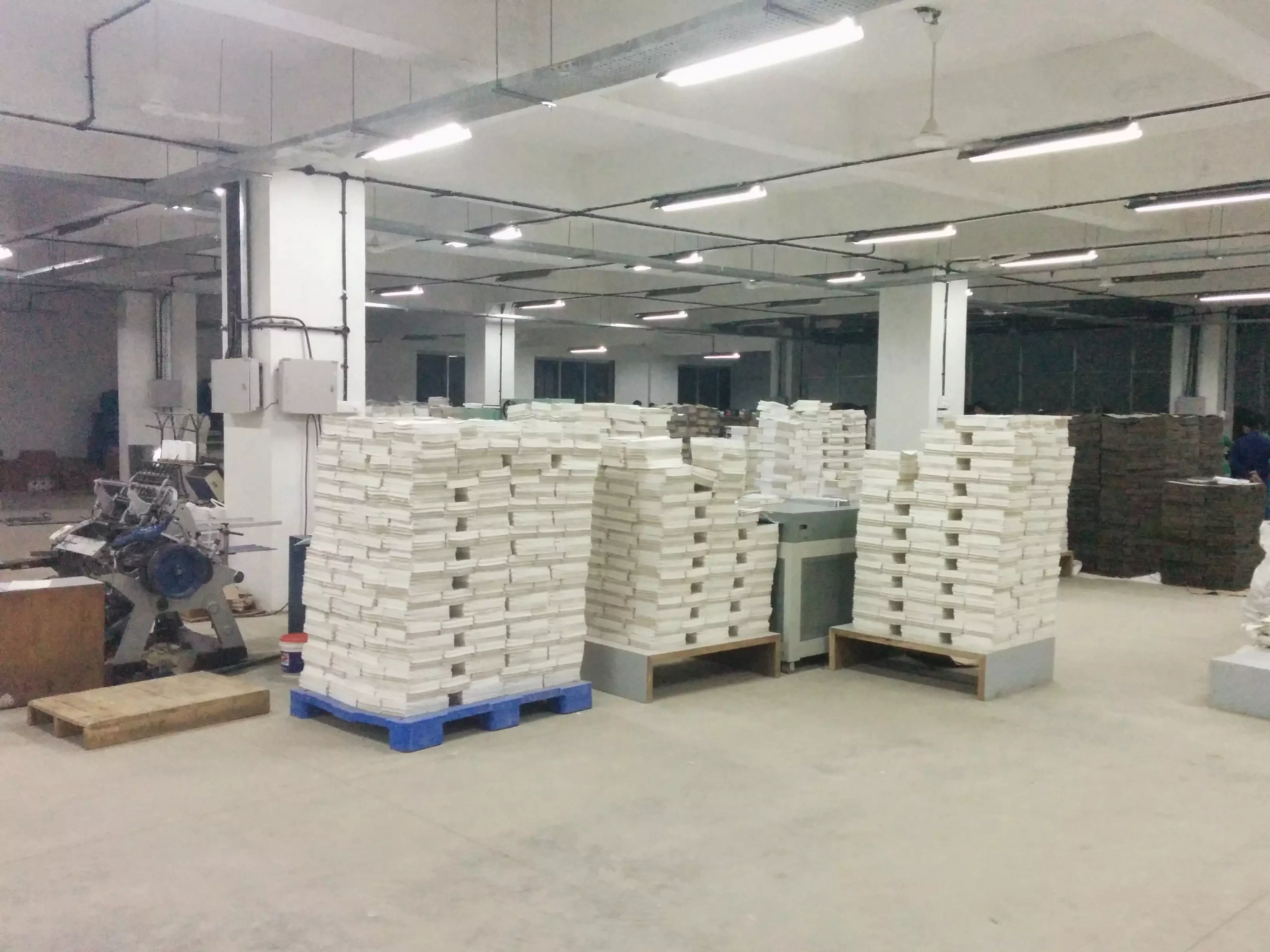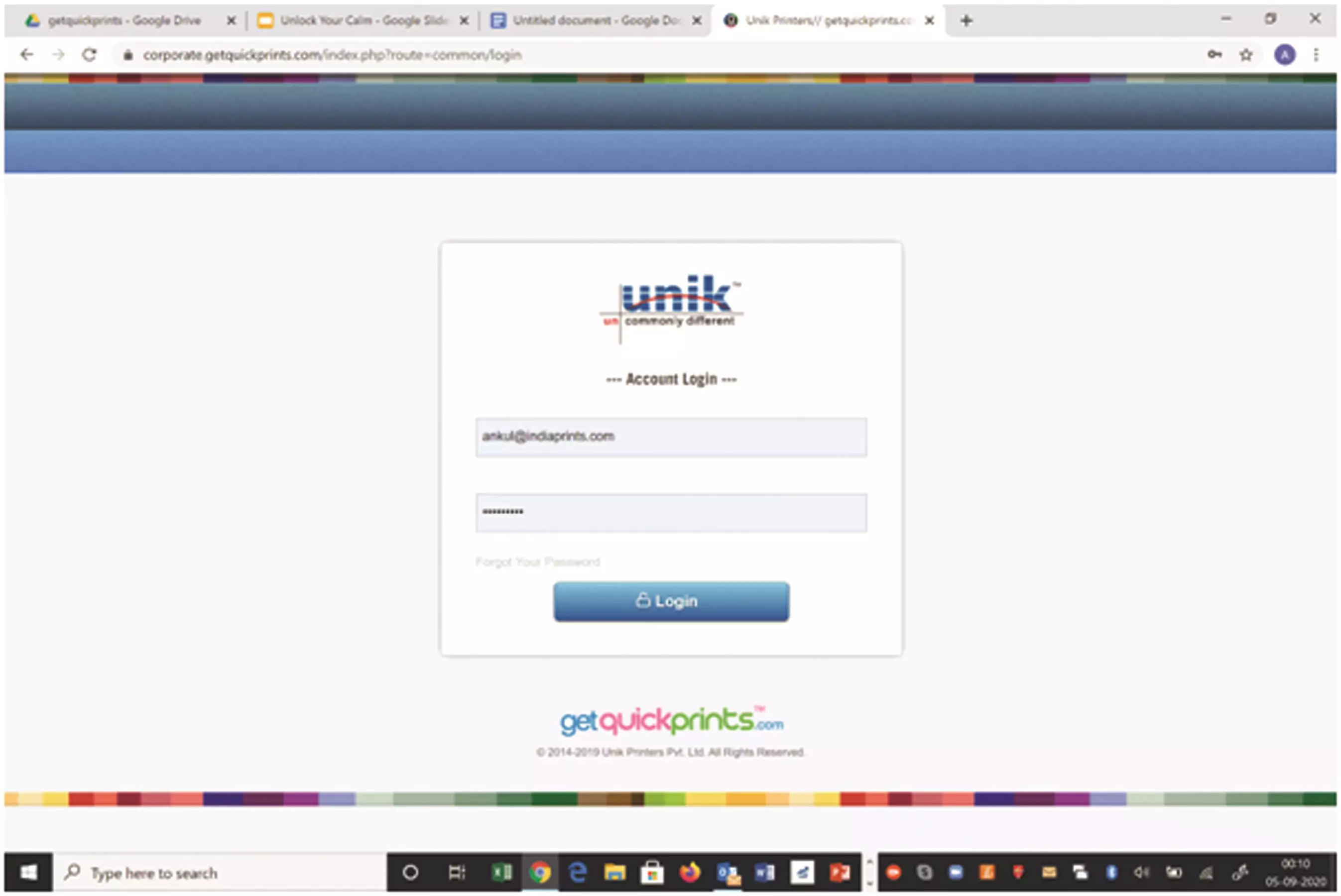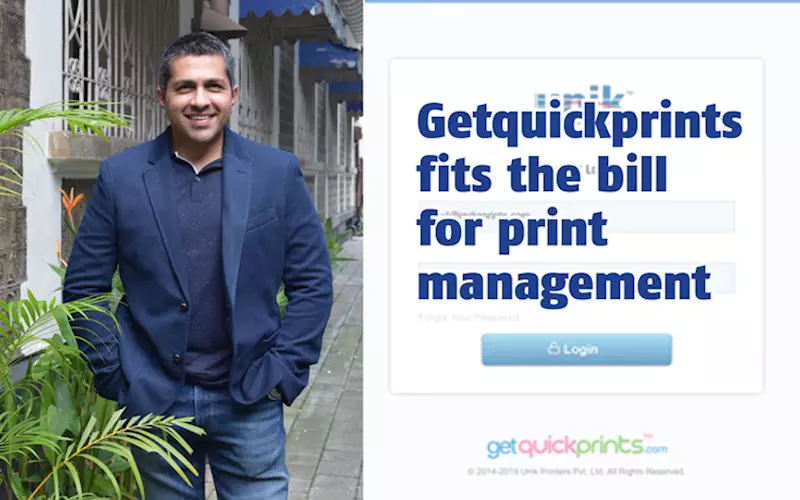Getquickprints fits the bill for print management - The Noel D'Cunha Sunday Column
E-platforms can be an effective way of delivering value-for-money print management solutions. But what does it take for an organisation to ensure that its e-platform provides a ‘best fit’ for the needs of its customers and their business?
Getquickprints shows how it can be managed.
A PrintWeek case-study. Read on...
11 Oct 2020 | By Noel D'Cunha
The birth of any good product starts with acknowledging the problem. The only reason the product is accepted and becomes a success is because it offers a solution to a pressing problem.
Today we all work from home, and it’s become a new normal. However, Ankul Nanavaty, director for business development at Mumbai’s Unik Printers and the man behind the Getquickprints project, likes to differ a little bit. “Today, we are expected to work out of everywhere and that’s a global reality. We are expected to be quick, efficient, precise, and have complete control. We need to have complete control of all systems, processes, and all operations. This calls for a choice of a very smart business tool, like any other operation. And that’s where our product kicks in.”
So, first, let’s establish and understand what print management as seen today is, what it needs to do, and how Getquickprints can answer all those challenges.
The problem
So, if we were to talk about what print management currently is, sadly, it is not
a very well defined system. “That’s because it’s manual, it’s unstructured, it
is inefficient, and it is data deficient,” says Nanavaty.
Nanavaty says most organisations do not have a formal print management platform, but they somehow manage to print.
He explains, “Most organisations have basic indenting modules, which only capture requests in very ineffective ways. They fail to acknowledge and appreciate the need for a well rounded print management platform mostly for the lack of understanding of it. The current print systems, if investigated, even in large organisations, will reveal high levels of manual intervention and people dependency.”

In short, these organisations collate all the requirements that come in from branches, product-wise, assimilate them together, send out tenders to four vendors for quote, negotiate, and place the order. “It’s manual, unstructured with no SOPs, inefficient as it leads to loss of productive time, and data deficient as it offers no information to take progressive future decisions,” says Nanavaty.
He adds, “Trust me, it’s a dynamic job. It’s like managing the MIS of your customer.”
Hence, this calls for using technology and tools that help to be quick to respond, efficient in function, precise in output and in control of all our operations.
Pulling pieces together
A well defined print management platform offers an exceptional user experience at every level of operation. It offers complete control to all its publics on a single dashboard – from simplifying the ordering and tracking of indents (for the user), to the ease of approval, efficient print production and last mile supply (for the administrator), to robust MIS systems (for the management) that serves well-curated information to study current and future trends for making informed management decisions.
Nanavaty says, “It’s like a big book of ingredients. We prepare the recipes and using the exact ingredients, which we call Getquickprints – the print management platform.”
So, how should a print management platform (PMP) be?
First, it should be automated, where placement of indents, collation, production, packaging, push notification, logistics management and close of indent is free of manual interpretation. It has to be structured – offering a well-defined user interface with clear SOPs. It should also be efficient, leading to optimal use of human efforts and eliminates waste, while offering abundant data for effective decision-making.

Comparing traditional system with PMP
Let us compare the performance of the platform to the traditional systems that are being used in the market:
Time taken by a print manager to collect indents of monthly print requirements from branches: Industry average seven hours and 42 minutes. With PMP there’s no time lag. Real time indenting gives the user the flexibility to order products anytime through the platform or the mobile application 24x7x365 and has it delivered within the acceptable TAT.
Time taken by a user to place monthly print indents: Industry average 40 mins. With PMP this is achieved within 60 seconds. The platform guides the user to place orders through its friendly UI with ease and speed. This makes it a delight to use.
Time taken to get updates on indents: Industry average three days. With PMP, one can get real time instant updates. The user gets instant push notifications and updates on the order as it moves from one level to the next, until delivery.
Time taken to get updated MIS across functions: Industry average seven days. With PMP, there are real time instant updates.
“Getquickprints comes with a robust real time MIS dashboard that helps the management with in-depth insights to take timely and effective decisions,” says Nanavaty.

Access points
Getquickprints, upon a signup, comes with an exclusive mini-site for every customer, which is used by its users across the country and abroad to log indents for printed, non printed collaterals and merchandise. The platform offers a mobile application for Android and iOS users to place indents on the go to offer 24x7x365 seamless functionality.
Nanavaty concludes, Getquickprints is a tribute to our fellow printers, customers and print custodians who are passionate about this art and want to keep the tactile magic of ink on paper alive. “As we always say, Long Live Print."
Ankul Nanavaty, director, Unik Printers
When and what prompted you to embark on this project?
I was never inclined towards IT until a discussion with a client, in 2012, pushed me to think about the possibility of moving the complete print indenting to fulfilment cycle on a single linear platform. I discussed the complexity of this process with my brother-in-law, a software architect, and he encouraged me to look at this as an opportunity to redefine my business. Soon enough, the research into the world of web to print and print management got me speaking to IT developers. The next thing I know we had a financial feasibility report to approve the investment and we were on our way.
Being a printer, it certainly wasn’t going to be easy, yet you did. Why did you think you would succeed?
Honestly, this started as a passion project, a long shot, but as it took shape I got determined to see it through. Finally, here was a possibility to own a marketable product.
Today, I look at this platform as a start-up in many ways. The curvature of the challenges is similar to that of a start-up, where we are not only convincing and converting customers but also creating a market by educating our customers to adapt and adopt this technology tool.
The one reason that held my passion together was the confidence in the value that this platform could add to the operations of our customers. I was and am 100% convinced that if you don’t see the need for this today, it’s a matter of time that you will. Here is the time capsule, the product started in 2012 and its only being spoken of in 2020.

What were the challenges and how did you solve them?
Ours is a classic story of the famous shoe brand in Africa, where no one wore them, no one wanted them. We are literally treading that same path. In 2014, when I started meeting customers, I was speaking to myself. The meeting ended before I was served some water. It was disheartening to see most marketers switching off the minute I used the word online print management. Many didn’t understand and most didn’t want to. I realised we had to wait.
We decided to put it on hold and move it into a cold storage. In 2018, I received a call from one of the clients who had seen the demo in his earlier jobs. His interest in process automation and process efficiency led to our first sign up. Have to admit the four years of hibernation did us good, the online shopping revolution spell a huge influence on the acceptance of the platform. The journey for us has just begun. We are better, faster, more secure and ready for our customers.
Do you think a platform such as Getquickprints is something that fellow print or print-packaging companies should seriously consider?
It’s important to think beyond what you are doing today. I strongly believe that innovation and customer delight is the only way to grow; it could be in terms of product, technology or service innovation. The key is to add value and stay relevant to your customer. If you are capable to stay relevant you will survive and grow with them.
What next?
Saving that for my next feature. Watch out for us.
On offer

Getquickprints features :
- Online web2print workflow
- One time pre-defined brand guidelines for colour, fonts, size,paper stock for consistent brand identity.
- Multi-user access
- Single administrator authorisation window
- Customisable user rights
- Authorisation controls
- Employee order history
- Real time MIS on spends, (employee, product and branch specific )
- Inventory management
- Budget utilisation
- Multiple location delivery
- End-to-end logistic management
- Mobile application
Getquickprints workflow
- Login through user specific id
- Select products
- View and approve order
- Get delivery at single or multiple locations across India
- Multi level push notifications on indent status

getquickprints benefits
- No more manual spreadsheets
- Offers control and consistency in maintaining your brand identity
- Automated collection and collation of indents
- Quick and efficient three levels of authorisation
- No administrative intervention in the order fulfilment cycle
- Automated communication between indenter and head office
- Control on use of platform and indenting checks
- Control on spends through strong MIS reporting
- Real time control on inventory
- Trend on budget utilisation
- Monitor progress of your indent
- Reduction of resource allocation and employee cost
- Mobile application for 24x7x365 access











 See All
See All